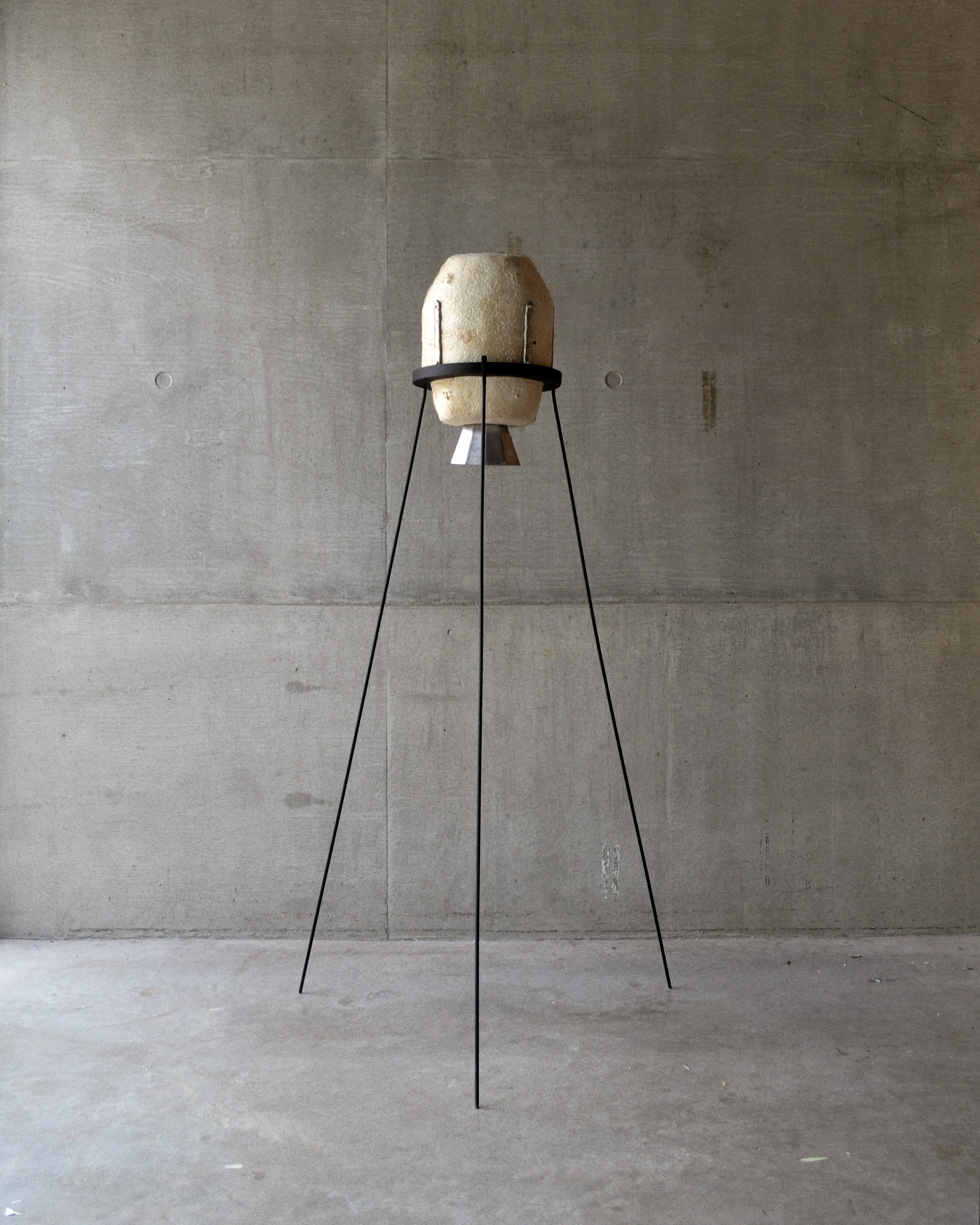Living with Wildfire
2022A sculptural mechanism which releases fungal spores during a wildfire to jumpstart soil remediation and symbolise regeneration in a changing bioregion.
Changing winter and summer conditions will increase UK wildfire risk by up to 50% by 2080. We urgently need to [re]adopt a more nuanced mindset around fire to understand that in varied moderation, fire is a vital part of healthy ecosystems. As images of devastatingly orange skies from the most fire-prone areas around the world make loud headlines, can we preempt localised wildfire doom in the UK and find hope by bringing preventative and remediating measures out into the open?
Living with Wildfire intro film
cinematography and editing by Maël Hénaff
“We need not just reseeding, but also reinoculating. Recuperation is still possible, but only in multispecies alliance, across the killing divisions of nature, culture, & technology & of organism, language, & machine.”
– Donna Haraway, Staying with the Trouble: Making Kin in the Chthulucene, 2016
As much a speculative proposal as it is functional, Living with Wildfire offers a self-contained, fire-activated mycoremediation system in an art object, belonging on the perimeter of a home or civic building in a British rural-urban interface zone.

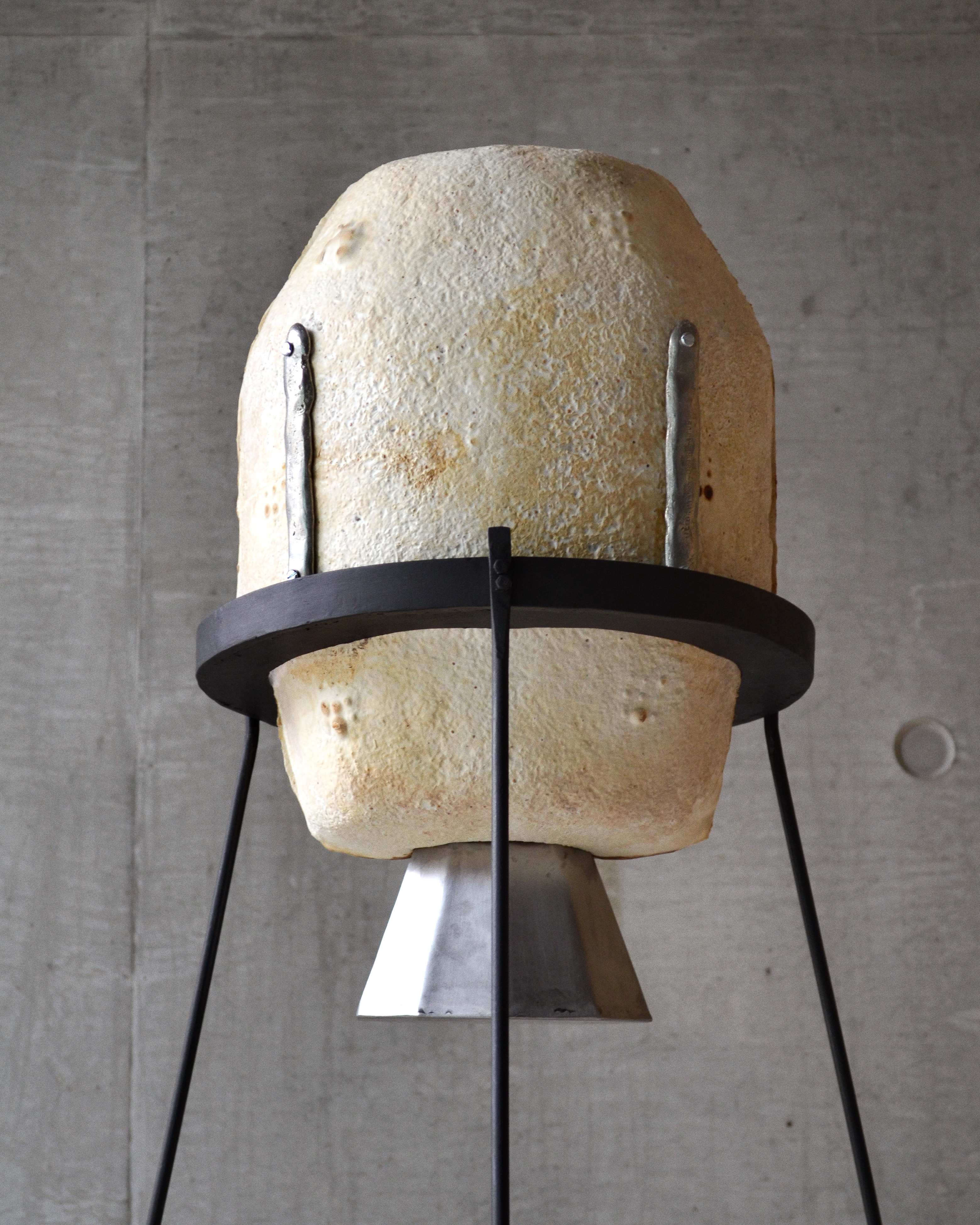
The form is a mycelium sculpture, adorned with descriptive tags made from thick pieces of lead-free pewter, held up on a steel frame. This mycelium (the interwoven root-like hyphae that make up the majority of fungal organisms’ biomass) is grown on silica-rich substrate to enhance its natural fire-resistance. Inside this protective form is a steel vessel, sealed by a cork that contains billions of dormant spores of oyster mushroom, or Pleurotus ostreatus.
“In time, the spores take hold, consuming charred plant matter & pollutants alike. The sculpture’s possession & eventual use are a performance of sympoiesis between homeowner, their toxins, fungi, and water.”
– Living with Wildfire, critical text
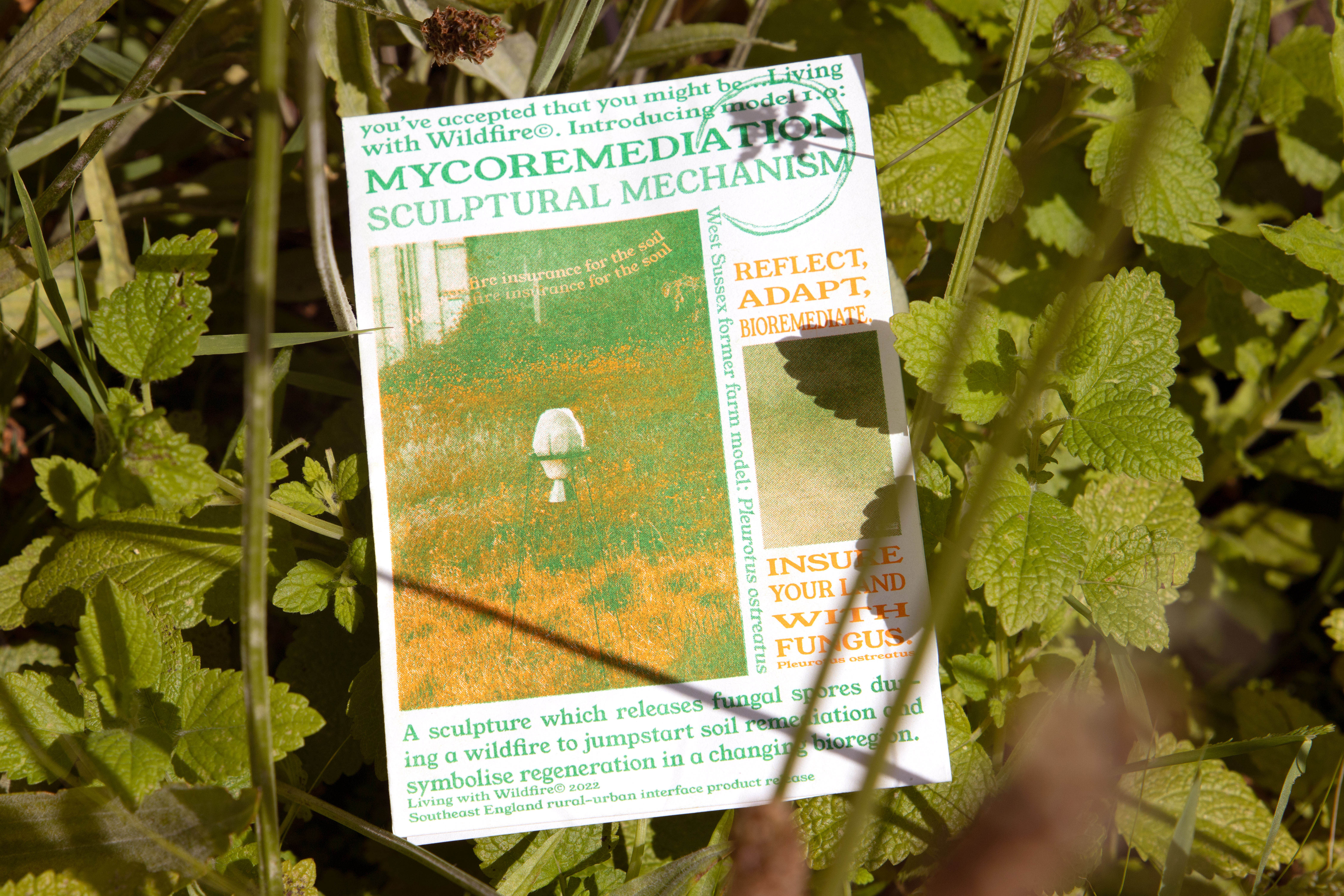
If a wildfire reaches the brush piled underneath the frame (gathered from fire prevention forest thinning), steam builds in the vessel, triggering a ‘spore explosion’ that inoculates the surrounding earth and detritus with Pleurotus. The fungi will aid in erosion prevention and begin to break down toxic persistent organic pollutants (POPs) that are found after fires in partially developed landscapes. The pewter tags melt quickly, flowing into the steel rim below, casting a remembrance of the event.
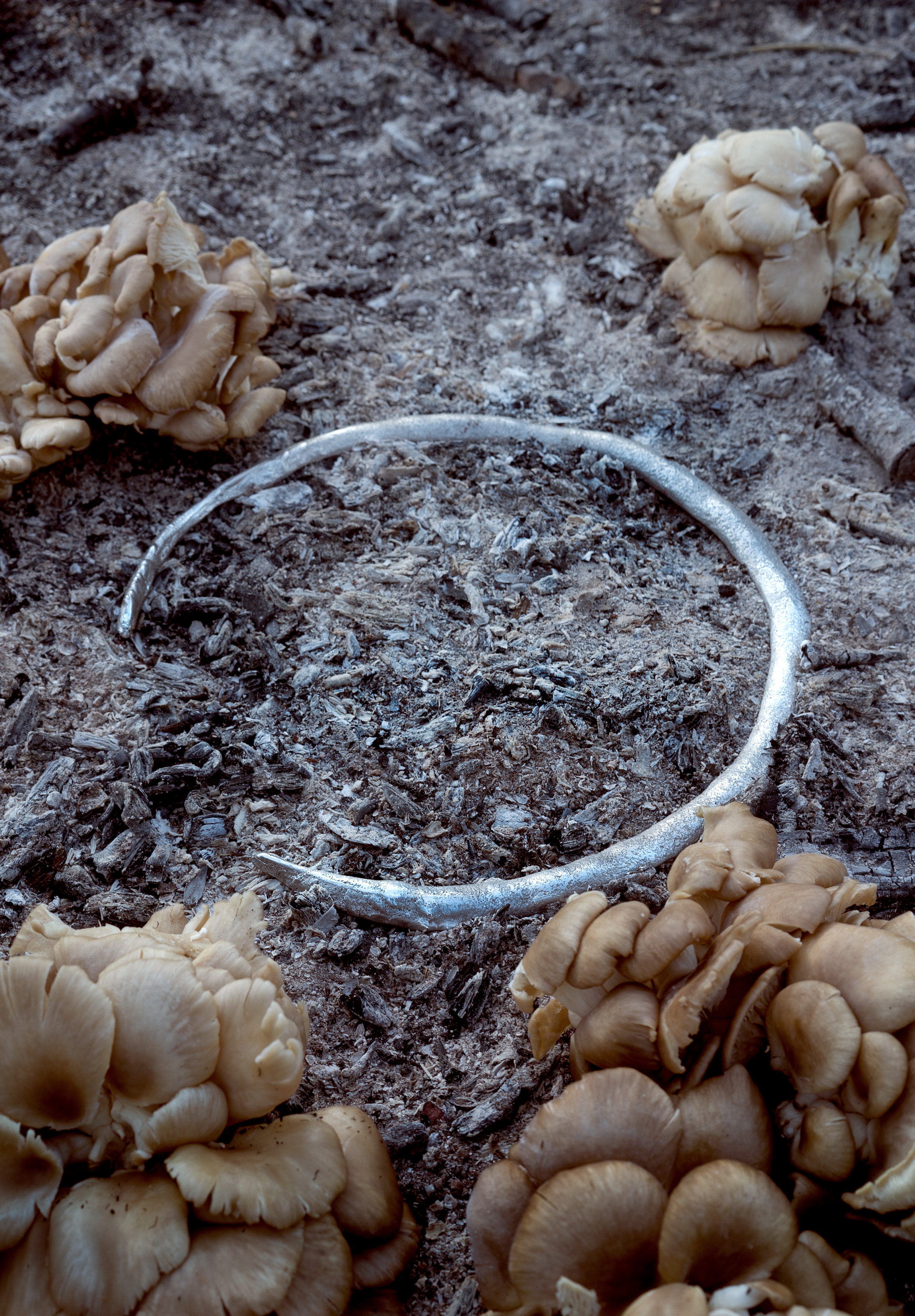
As an ecologically attuned art piece and small-scale, decentralised wildfire insurance plan, Living with Wildfire encourages reflection, adaptation and bioremediation, while leaving room for the grief that comes with witnessing a changing bioregion.
“In a
matter of years, the UK will be ill-prepared to handle wildfires. It must
consider what it might need in the future.”
– G. Rein, Professor of Fire Science,
Imperial College London (2020)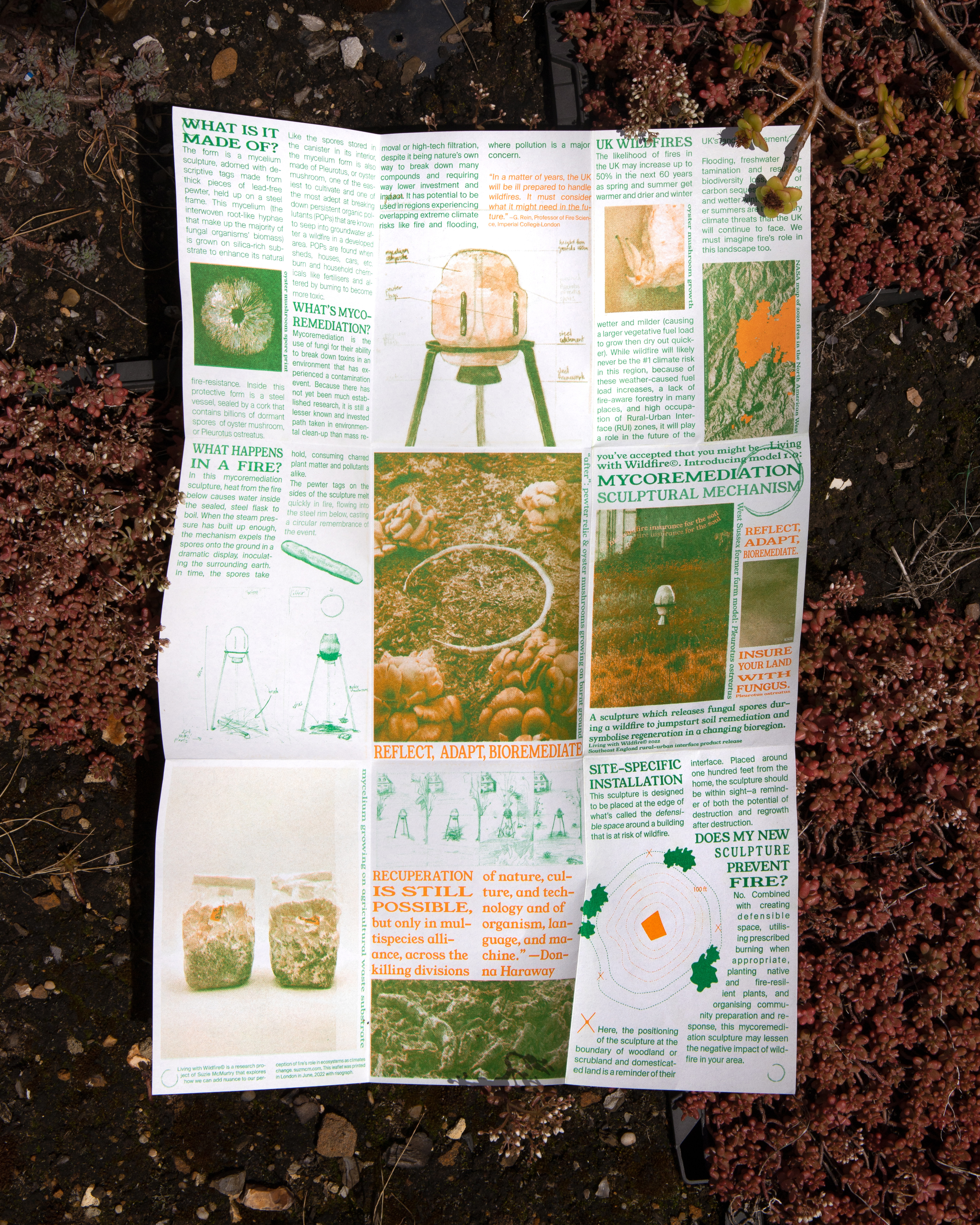


– A.C. Scott et al., ‘The interaction of fire and mankind: introduction’ (2016)“Fire may not only have an impact on the vegetation (and houses built within the burnt area), but is also a threat to human health from fire-produced smoke & fire’s influence on post-fire erosion, flooding & its potential to contaminate water supplies.”
